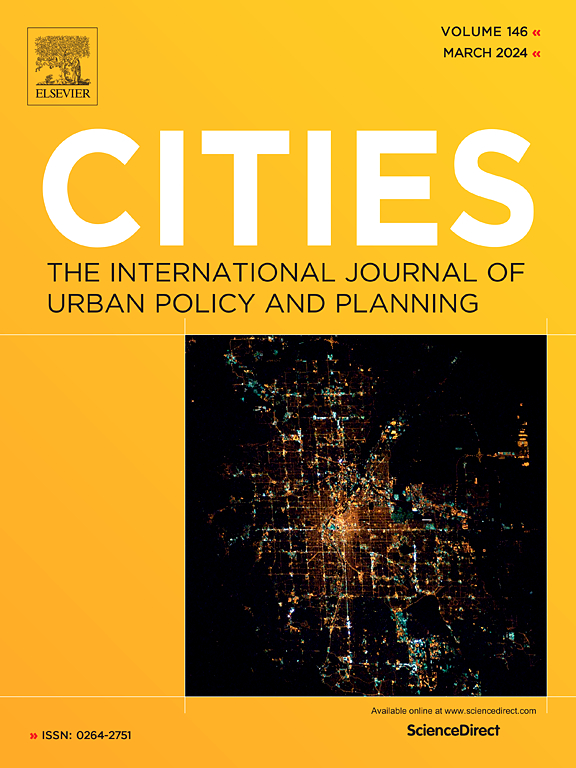Neighborhood-level determining factors of travel distance by trip purpose: Policy implications for the N-minute city
IF 6
1区 经济学
Q1 URBAN STUDIES
引用次数: 0
Abstract
As part of efforts to reduce carbon emissions, the concept of n-minute cities has been proposed. Although many global cities have attempted to implement this idea, there is still a lack of quantitative research on n-minute cities. This study aims to analyze factors that influence living radii by utilizing mobile phone location-based mobility big data and spatial regression analysis, thereby contributing to the implementation of n-minute cities. By distinguishing between pre- and post-COVID-19 periods and between commuting and non-commuting travel, this study reveals decreased average travel distances in the post-pandemic period and identifies factors influencing living radii, thereby favoring the concept of n-minute cities. During the post-COVID-19 period, the impact of factors such as population density, commercial facilities, and the job-housing ratio on travel distance has shifted, while neighborhood living and cultural facilities maintain consistent influence. This underscores the importance of prioritizing these aspects in n-minute city planning. Additionally, the mix of residential and business uses consistently affects shorter commuting distances, highlighting its critical role in n-minute city development. This study is significant for identifying urban environmental factors that effectively reduce living radii based on actual travel behaviors.
按出行目的划分的邻里出行距离决定因素:对 N 分钟城市的政策影响
作为减少碳排放努力的一部分,人们提出了 n 分钟城市的概念。尽管全球许多城市都在尝试实施这一理念,但目前仍缺乏对 n 分钟城市的定量研究。本研究旨在利用基于手机定位的移动大数据和空间回归分析,分析影响生活半径的因素,从而为 n 分钟城市的实施做出贡献。通过区分 "COVID-19 "之前和之后、通勤和非通勤出行,本研究揭示了 "COVID-19 "流行后平均出行距离的减少,并确定了影响生活半径的因素,从而有利于 "n 分钟城市 "概念的实现。在后 COVID-19 时期,人口密度、商业设施、工作与住房比例等因素对出行距离的影响发生了变化,而社区生活和文化设施的影响保持一致。这凸显了在 n 分钟城市规划中优先考虑这些方面的重要性。此外,住宅和商业用途的组合始终影响着较短的通勤距离,突出了其在 n 分钟城市发展中的关键作用。这项研究对于根据实际出行行为确定有效缩短生活半径的城市环境因素具有重要意义。
本文章由计算机程序翻译,如有差异,请以英文原文为准。
求助全文
约1分钟内获得全文
求助全文
来源期刊

Cities
URBAN STUDIES-
CiteScore
11.20
自引率
9.00%
发文量
517
期刊介绍:
Cities offers a comprehensive range of articles on all aspects of urban policy. It provides an international and interdisciplinary platform for the exchange of ideas and information between urban planners and policy makers from national and local government, non-government organizations, academia and consultancy. The primary aims of the journal are to analyse and assess past and present urban development and management as a reflection of effective, ineffective and non-existent planning policies; and the promotion of the implementation of appropriate urban policies in both the developed and the developing world.
 求助内容:
求助内容: 应助结果提醒方式:
应助结果提醒方式:


